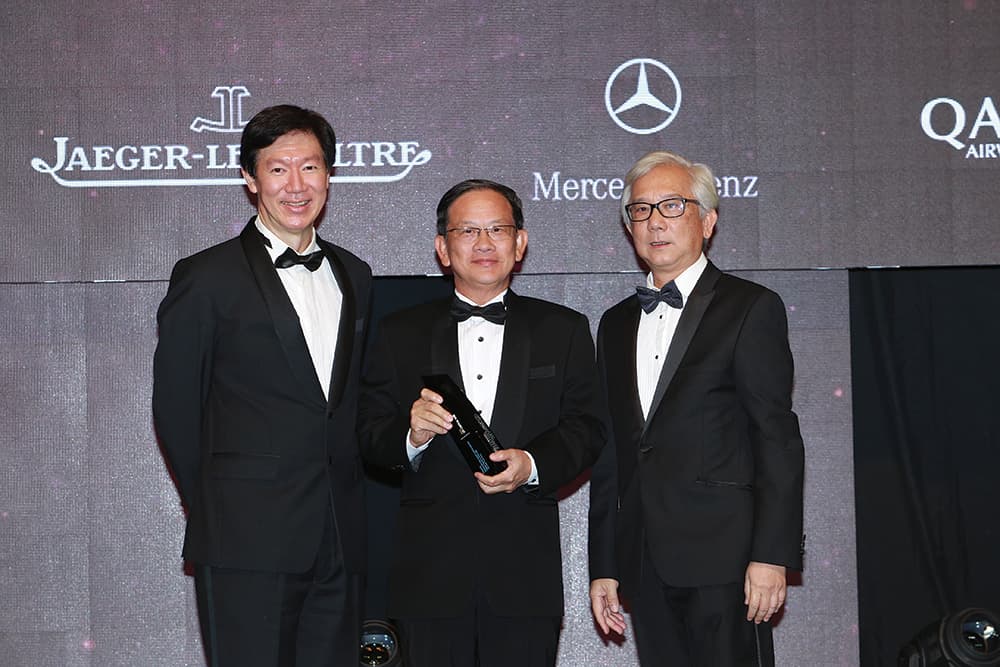Volatile commodity prices and a weaker ringgit were among the factors weighing on the market as well as business and consumer confidence in Malaysia in recent years.
General insurer LPI Capital Bhd managed to navigate the choppy waters to win the award in its category with a three-year profit after tax (PAT) compound annual growth rate of 29.47% — the highest among peers in the finance sector with under RM10 billion market capitalisation.
On a year-on-year basis, PAT grew 13.4% to RM320.99 million in FY2015 from RM283.02 million in FY2014. In FY2016, PAT rose 36.2% to RM437.22 million.
The company’s gross written premium has increased in tandem, from RM1.15 billion in FY2014 to RM1.28 billion in FY2016, while net earned premium increased to RM767.3 million in FY2016 from RM653.68 million in FY2014.
LPI Capital operates its general insurance business through wholly-owned subsidiary Lonpac Insurance Bhd. A large chunk of its gross written premiums is derived from the fire segment.
A May 18 initiation report by AffinHwang Capital Research sees LPI having an advantage over other general insurance and takaful industry players when it comes to the portfolio mix of underwritten policies.
While industry players have an average of 18.3% of gross written premium on fire policies and 46.5% exposure to the motor segment, LPI’s mix in FY2016 of 40.8% fire policy exposure and 23.1% gross written premium stands out.
This is because fire policies are known to provide higher returns due to lower claim rates, compared to the motor segment’s higher claims ratio.
“As individual insurer’s claims and commission ratios are generally indifferent to the industry average, with management having little control over these costs, LPI’s focus on the more profitable fire portfolio allowed LPI to generate an overall higher underwriting profit margin relative to its peers,” says the research house.
LPI’s underwriting margin stands at 31.4% compared with the industry average of 12.1%.
It is also worth noting that LPI Capital’s combined ratio, which measures the profitability of insurers, has improved to 63.7% in FY2016 from 68.8% in FY2014. The company attributes the improvement to greater efficiencies from leveraging technology and greater staff productivity as well as underwriting discipline.
LPI Capital operates in three countries — namely Malaysia, Singapore and Cambodia. However, its overseas revenue contribution is small at 6.5% as at FY2016, compared with 93.5% from Malaysia.
With the liberalisation of the general insurance industry underway, LPI Capital is definitely not resting on its laurels.
“The group has weathered the immediate impact of liberalisation well, and has protected its market share from the competitors,” the company says in its 2016 annual report. As at September 2016, LPI Capital’s market share in the general insurance space stood at 7.04%.
The company admits it expects to see some margin compression moving forward but is working at developing new speciality products and leveraging its business process management system to optimise efficiency.
Nevertheless, Affin Hwang Capital believes LPI Capital will be able to manage the detariffication well given its lower exposure to the higher claims ratio motor segment.
“While fire insurance policies are likely to be impacted under the framework as well, we believe that LPI Capital’s established fire agency force, strong relationship with its bancassurance partner, independent brokers and global partners are likely to mitigate any significant negative impact and support its growth and underwriting profit in the segment,” it adds.


